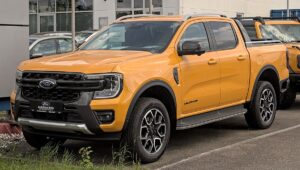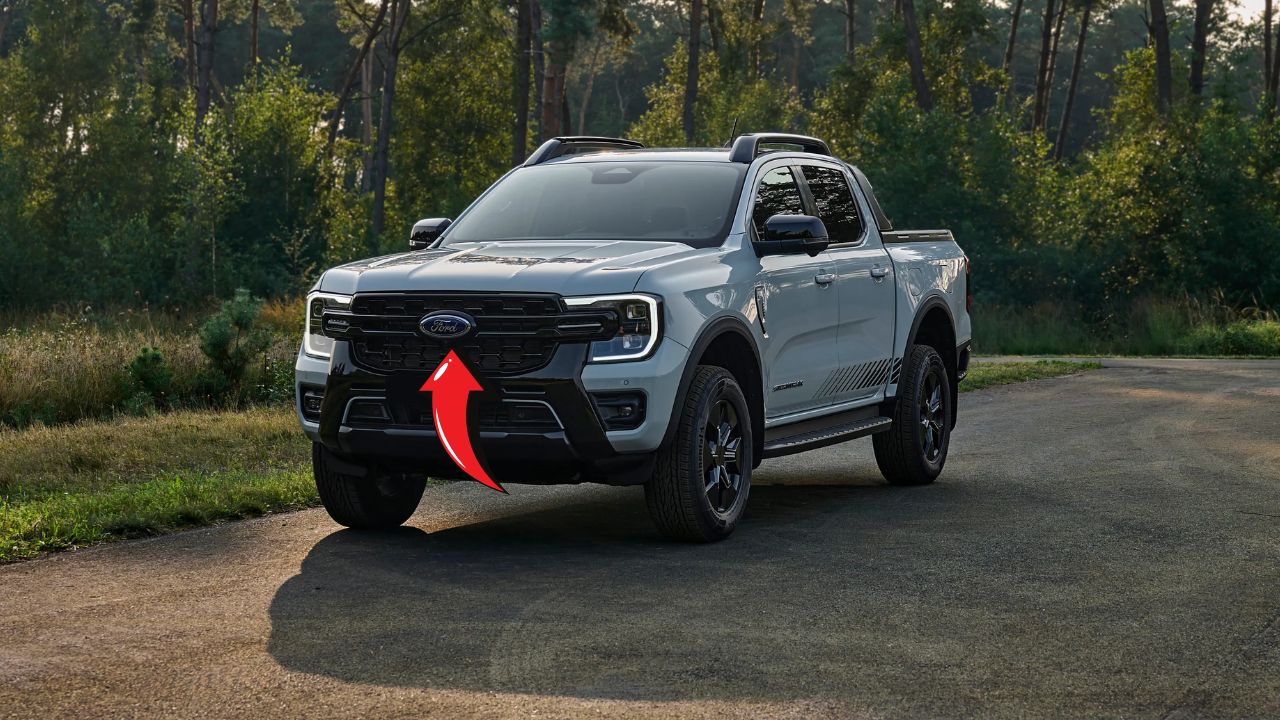The Ford Ranger has long been a staple in the Australian automotive landscape, a rugged ute synonymous with tradies, farmers, and adventure-seekers who need a vehicle that can handle tough jobs and rough terrain. But with the arrival of the 2025 Ford Ranger Plug-in Hybrid Electric Vehicle (PHEV), Ford is taking a bold step away from its traditional tradie fanbase. This electrified version of the iconic Ranger is designed with a different audience in mind—urban professionals, eco-conscious families, and lifestyle adventurers. While it retains the Ranger’s legendary capability, its focus on efficiency, technology, and versatility signals a shift that might leave some tradies feeling sidelined. Here’s a deep dive into why the Ford Ranger PHEV is steering clear of the tradie toolbox and what it offers instead.
A New Kind of Ranger
The Ford Ranger PHEV, set to hit Australian showrooms in early 2025, combines a 2.3-litre EcoBoost turbocharged four-cylinder petrol engine with a 75kW electric motor and an 11.8kWh (usable) battery pack. This parallel hybrid system delivers a combined output of 279PS (approximately 205kW) and an impressive 680Nm of torque—more than any other Ranger in the lineup, including the 3.0-litre turbo-diesel V6, which produces 600Nm. The result is a ute that promises zero-tailpipe-emission driving for up to 45km (WLTP cycle), making it ideal for short urban commutes or navigating low-emission zones in cities.
But this isn’t just about numbers. The Ranger PHEV introduces features that set it apart from its diesel and petrol siblings, most notably the Pro Power Onboard system, which allows the vehicle to act as a mobile generator. With up to 6.9kW of power output (depending on the configuration), owners can plug in everything from power tools to camping appliances directly from outlets in the cabin and cargo bed. This feature, while useful for work, seems tailored more for recreational use—think powering a fridge at a campsite or charging e-bikes for a weekend adventure.

Why It’s Not for Tradies
Tradies—electricians, plumbers, builders, and other tradespeople—rely on their utes for heavy-duty tasks: hauling tools, towing trailers, and navigating worksites daily. The Ford Ranger has historically been their go-to, with its robust payload capacity (up to 1,000kg), towing capability (3,500kg braked), and durable diesel engines built for long hours and tough conditions. While the Ranger PHEV matches the towing capacity of its internal-combustion counterparts and maintains a payload of around 1,000kg, its design and features suggest it’s not optimised for the tradie lifestyle. Here’s why:
-
Urban Focus Over Worksite Grit: The 45km electric-only range is a boon for city dwellers who make short trips, but for tradies who often cover long distances or work in remote areas, this range is limiting. Once the battery depletes, the 2.3-litre petrol engine takes over, but its fuel efficiency (estimated at 3.0L/100km combined) may not match the long-range economy of a diesel engine, which tradies favour for its reliability and lower running costs on extended drives.
-
Charging Challenges: Tradies often park their utes on worksites or in areas without easy access to charging infrastructure. The Ranger PHEV requires external charging (via a 240-volt outlet or public charger) to maximise its electric range, which could be a hassle for those constantly on the move. While regenerative braking and the EV Charge mode (using the petrol engine to charge the battery) help, they don’t fully replace the convenience of a diesel tank that can be refilled anywhere.
-
Premium Pricing: Although exact pricing for Australia hasn’t been confirmed, the Ranger PHEV’s advanced tech and hybrid system suggest it will sit at the higher end of the Ranger lineup, likely starting around AUD $60,000–$70,000 for models like the Wildtrak or Stormtrak editions. Tradies, who often prioritise value and durability over luxury, may balk at the premium cost compared to a diesel XLT or Sport model.
-
Pro Power Onboard’s Mixed Appeal: The Pro Power Onboard system is a standout feature, allowing the Ranger PHEV to power tools or equipment without a separate generator. However, tradies already own generators or rely on worksite power sources, and the 6.9kW output (or 2.3kW standard) may not justify the added complexity of a hybrid system for their needs. This feature feels more suited to campers or outdoor enthusiasts who want to power fridges, lights, or stoves off-grid.
-
Shift in Target Audience: Ford’s marketing for the Ranger PHEV emphasises “adventure-ready versatility” and “electrified off-road presence,” with trims like the Stormtrak Launch Edition boasting premium styling (18-inch alloys, Agate Black or Chill Grey paint, and unique interior detailing). This suggests a focus on lifestyle buyers—think urban professionals who weekend in the bush or families wanting a greener alternative to a traditional ute. Tradies, who need a no-frills workhorse, may find these features less practical.
Who’s It For, Then?
If tradies aren’t the primary audience, who is? The Ranger PHEV seems designed for a growing segment of Australian buyers who want a versatile, eco-friendly vehicle that can handle both city life and outdoor adventures. Here are the key groups Ford is targeting:
-
Urban Professionals: With its 45km electric range, the Ranger PHEV is perfect for city commuters who want to reduce fuel costs and emissions. The ability to switch to EV Now mode for zero-emission driving makes it ideal for navigating urban areas or low-emission zones (though these are yet to be widely implemented in Australia). The premium interior, featuring a 12-inch SYNC 4 touchscreen and digital instrument cluster, adds a level of sophistication that appeals to this demographic.
-
Eco-Conscious Families: Families looking for a practical yet environmentally friendly vehicle will appreciate the Ranger PHEV’s blend of electric efficiency and traditional ute capability. It can tow a camper for holidays, carry sports gear, or handle school runs on electric power alone, all while offering seating for five in double-cab variants.
-
Adventure Enthusiasts: The Pro Power Onboard system and off-road capability (with five selectable drive modes and a full-time 4×4 system) make the Ranger PHEV a dream for campers, overlanders, and outdoor lovers. The ability to power appliances or charge e-bikes at remote campsites adds a layer of convenience that diesel Rangers can’t match.
-
Businesses in Urban Areas: Small businesses operating in cities may find the Ranger PHEV appealing, especially with its geofencing capability, which automatically switches to electric mode in low-emission zones (a feature more relevant in Europe but potentially future-proof for Australia). The Ford Pro ecosystem, including charging solutions and software, further caters to commercial users transitioning to electrified fleets.
Technical Highlights
The Ranger PHEV’s hybrid powertrain is a standout, combining a 2.3-litre EcoBoost engine with a 75kW electric motor integrated into a 10-speed modular automatic transmission. The 11.8kWh battery, mounted between specially engineered frame rails, supports four EV driving modes:
-
Auto EV: Balances performance and efficiency, using electric power for low-demand situations and engaging the petrol engine when needed.
-
EV Now: Prioritises electric-only driving for zero-emission trips.
-
EV Later: Preserves battery charge for later use, relying on the petrol engine.
-
EV Charge: Uses the petrol engine to charge the battery while driving, supplemented by regenerative braking.
The vehicle retains the Ranger’s off-road prowess, with a two-speed transfer case (2H, 4A, 4H, 4L), a rear differential lock, and a Terrain Management System with modes like Normal, Eco, Sport, Tow/Haul, Slippery, Mud/Ruts, and Sand. Its suspension has been revised to account for the hybrid system’s weight distribution, ensuring a balance of on-road comfort and off-road capability.
The Bigger Picture
Ford’s decision to pivot the Ranger PHEV away from tradies reflects broader trends in the Australian automotive market. With increasing demand for electrified vehicles—evidenced by the success of hybrids like the Toyota RAV4 and the upcoming BYD Shark 6 PHEV—Ford is positioning the Ranger to compete in a space where eco-conscious buyers and lifestyle adventurers are driving sales. The company’s Ford+ plan, which emphasises hybrid and electric vehicles, underscores this shift, with the Ranger PHEV joining the E-Transit, Mustang Mach-E, and other electrified models in Ford’s global lineup.
However, this move risks alienating the Ranger’s core tradie audience, who may prefer the simplicity and proven reliability of diesel models. Competitors like the Toyota Hilux and Isuzu D-Max continue to dominate the tradie market with diesel powertrains, and even the BYD Shark 6 PHEV is being marketed as a rugged, work-ready option. Ford will need to carefully balance its appeal to new buyers without losing its loyal base.
In Summary
The 2025 Ford Ranger PHEV is a bold step into the future, blending electric efficiency with the rugged capability that made the Ranger Australia’s best-selling ute. Its 45km electric range, 680Nm of torque, and Pro Power Onboard system make it a versatile choice for urban commuters, families, and adventure enthusiasts. However, its focus on premium features, urban usability, and electrified tech means it’s less suited to the daily grind of tradies who need a no-nonsense workhorse. By steering clear of the tradie toolbox, Ford is betting on a new breed of ute buyers—one that values sustainability and versatility over pure workhorse grit. Whether this gamble pays off in the competitive Australian market remains to be seen, but the Ranger PHEV is undeniably a game-changer for those ready to embrace an electrified future.
For more information, check out Ford Australia’s official site or follow their social channels for updates on the Ranger PHEV’s release.
